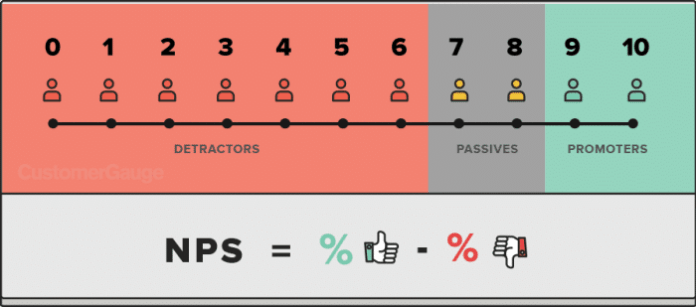Entrepreneurship is flourishing in our country and many of you have chosen to be a part of the ecosystem. Whether it’s an engineer, a management professional, marketer or a consultant, most of them are bringing business ideas to reality which is remarkable.
Since, many of you may not be aware of Net Promoter Score or heard it for the first time, but would think how is it important for your business. Let me articulate it for your better understanding whether you are in product or service oriented business.
By definition available on the web, “NPS is a score that measures the satisfaction level of a customer, employee and all the other associated stakeholders.”
On the other hand, it is a way of doing business, which requires every level of the organisation to be consistently focused on the quality of customer and employee relationships first.
How to calculate it?
NPS score calculation depends on various internal and external variables such as customers, business partners, employees and other stakeholders. However, the framework remains same. Since the customers/partners and stakeholders play an imminent role, let’s understand them first. Depending on the satisfactory level, we can divide them into three categories. Promoters – are the loyal ones who frequently get the service/purchase product from a company and urge their friends to do the same. Passives – are the satisfied but unenthusiastic group and can be easily disturbed/wooed by other players (competition). Detractors– are the bunch of unhappy ones trapped in a bad relationship. To make it clear, we use a scale of 0 to 10 and categories the detractor (0-6), Passive (7-8) and Promoter (9-10) respectively.
About the calculation process, a company can ask as many questions and use the responses to track the promoters and detractors through its customers’ partners and other stakeholder’s eyes. For an example, if you are running an e-commerce company, you need to identify these promoters and detractors by placing a feedback mechanism into your system that you can use to measure the same.
The best way of measuring company’s growth is to take the percentage of customers who are promoters and subtract the percentage who are detractors. This equation is how we calculate a Net Promoter Score for a company
Net Promoter Score = % of Promoters – % detractors
As per above the formula, if a company has 70% of the promoter and 30% of detractors, then the NPS would be 40% for the company.
In a way, NPS has its own advantage, but you can’t ignore the worse part of it. If a company has the negative or low NPS score, the kind of business you do gets impacted. Your jobs get more complicated as they are further questioned by the customer, partners and other stakeholders who rely on your product or services.
To be honest, an early age start-up cannot have better NPS score in the initial stage, as many of them just focus on streamlining their business process. But, it would be far easier for doing business if you place the feedback mechanism in your systems.
How to create favorable NPS?
Now, you must be thinking of the key ideas that can help you to manage the NPS score. There is no hard and fast rule that can help you in building and maintaining a good NPS score. You may also come across many of consulting agencies, assure you to provide better help. But in my opinion, it would be better if you yourself monitor your NPS score.
Below are a few tips that can help you to maintain the NPS Score: –
1. Place a feedback/complaint mechanism: as above said, you should place the NPS systems across the channels that could be captured. Conduct a customer feedback survey, ask them how could you serve them better, and see your detractors as an invaluable teacher.
2. Social Medium Channels: As many of individuals have their social profiles on different platforms, leave all your social media channels including blog and email channels open for the customer to express their sentiments.
3. Mapping the sentiments analysis: Post capturing the data, map the sentiments and analyse the score.
4. Improvement: once you have analysed the data captured through placed systems, now you should look at the different concerns that they raised. Try to improve your systems by closing all the loopholes and offer a great experience to them.
At last, I would say, “Installing the Net Promoter System requires a strategic commitment by company leadership because it defines cultural values and core economics that affect every part of the business system.”
SEE ALSO: Yahoo Answers Now Q&A app now available for iOS and Android
SEE ALSO: Google app gets offline search option on Android platform
SEE ALSO: Product Lifecycle Management: a challenge and an opportunity
SEE ALSO: Differences between B2C and B2B eCommerce in India
SEE ALSO: Now China has Unblocked Google Translate App
SEE ALSO: Google Duo’s audio-only call feature starts rolling out globally
SEE ALSO: Now Twitter has 328 Million monthly active users
SEE ALSO: Samsung Electronics team-up with VMware to simplify IoT
SEE ALSO: Alibaba Mobile Business Group promotes Young Li to head international business division

